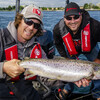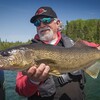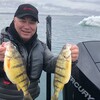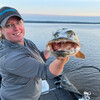Ontario's Trophy Splake Prize
It is fair to say that Ontario offers the finest fishing for splake anywhere in the world. And the best time to target the gorgeous trout hybrids is in the winter. Especially at first ice which is only a couple of weeks away in Northern Ontario.
Now, don’t ask me how we got onto this subject on one of the hottest days of the summer, but that is what happened when I started chatting with Finn Hartley, who manages the docks at Eagle Lake Island Lodge where I was muskie fishing. When Finn showed me the images of the splake that he and his buddies catch every winter in Algoma Country, I needed to know more.
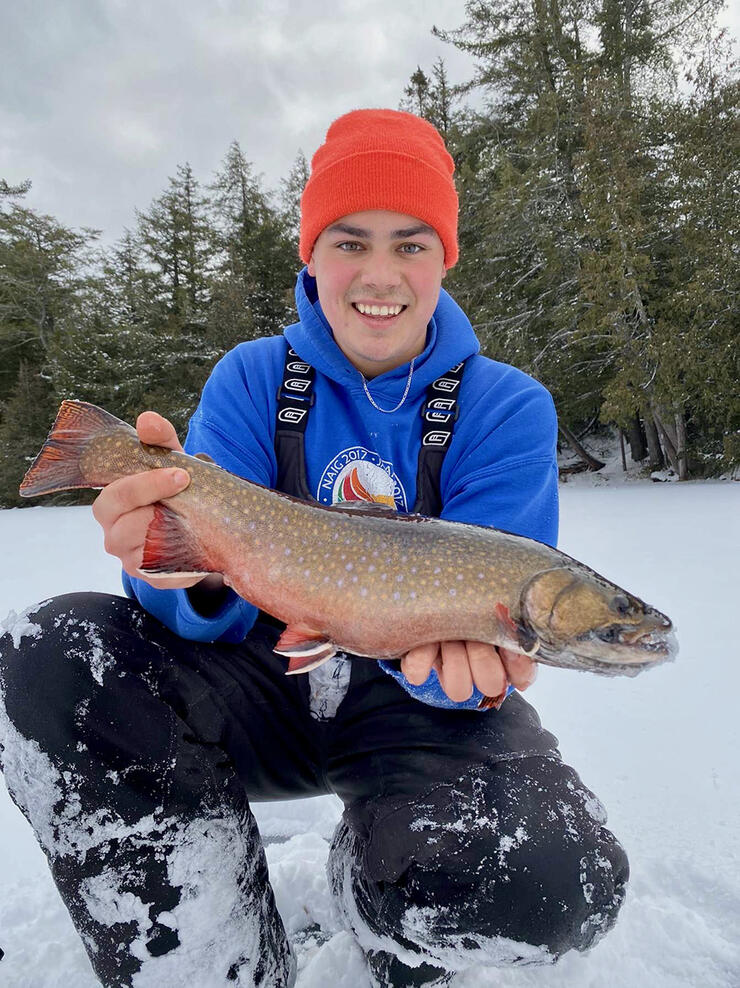
“I ice fish for splake as though they swim around the lake doing laps throughout the day,” he told me. “So I set up at natural funnels and ambush points. When I sight fish for them, looking down the hole, I see the fish coming from the same direction probably 90 percent of the time.”
Being a hybrid cross between lake trout and speckled trout means that splake share the characteristics of both parents, but Hartley says he counts on the brook trout genetics to prevail more than the lake trout traits.
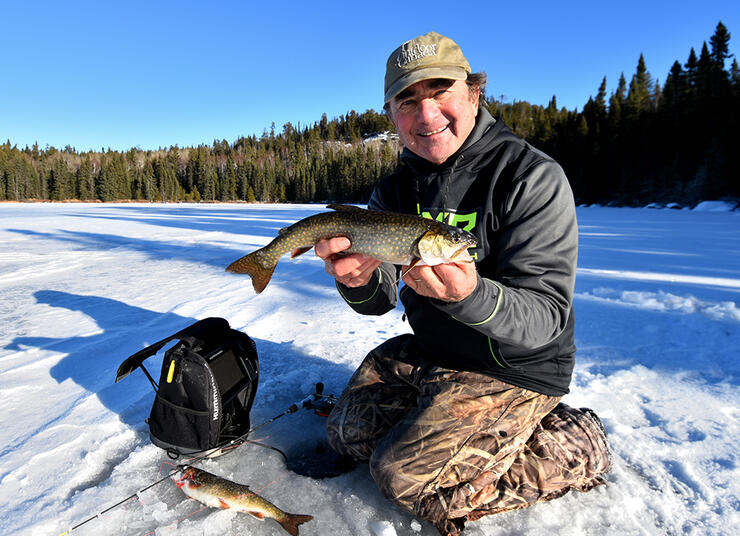
“I may cheat towards the 12- to 16-foot breaklines, if I know I’m on a lake with trophy splake potential,” Hartley told me, “but in the waters, I fish where splake and natural lake trout coexist, I’ve found that they fill the role of their square-tailed parents. They roam the shallows for a much longer period of their life before venturing deeper.”
According to the keen splake aficionado, Hartley starts every day on the ice looking for sunken timber, weed edges, and inflowing creeks, streams, and rivers. Employing a two-hole setup, he sets a tip-up baited with a lively minnow in a shallow hole close to shore, while he jigs a size 40 Williams Wabler in a deeper one. And he keeps moving every 45 minutes until he contacts fish.
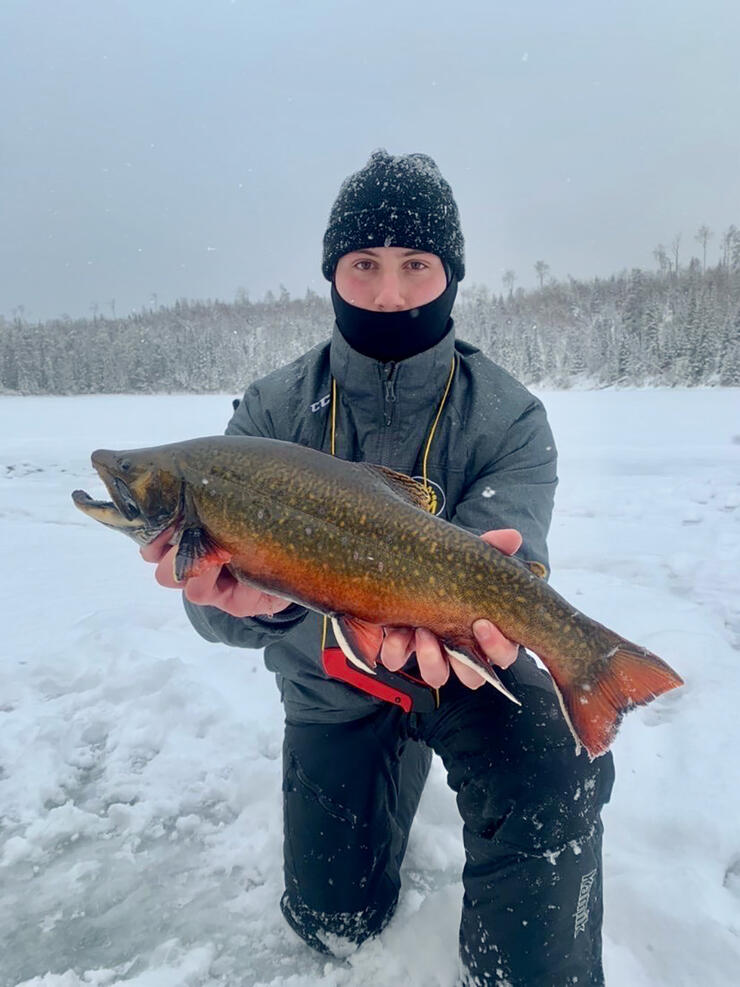
“The splake in my home lake coexist with pike and perch,” he says, “and I fish them on a four-foot deep shoal that is surrounded by ten to fifteen feet of water. I like to fish right at the top of the break. Another great spot on the lake is an eight-foot-deep weed line. Finding the edge is always important. Splake are roaming pack predators so you need to catch their attention. They don’t sit in the weeds waiting to ambush their prey. After I find the fish and develop a pattern, I start cheating and moving out to deeper contours for trophy-size fish. I also upsize my baits and jig more aggressively. Longer strokes for longer fish, I always say.”

Interestingly, while Hartley has iced plenty of two-foot-long splake, he says he has yet to find the perfect rod and reel combination. “I’ve tried pan fish noodles and they’re too soft when you have a four- to five-pound splake, roll in and tee off,” he says. “By the same token, most light action walleye rods are a little too stiff through the middle to enjoy the smaller fish. So, you want backbone to set the hook, but serious flex in the tip to absorb those first few aggressive head shakes. For these reasons, I like a super fast action rod and reel loaded with a 10 to 12pound test ice braid and a short eight to ten-pound test fluorocarbon leader.
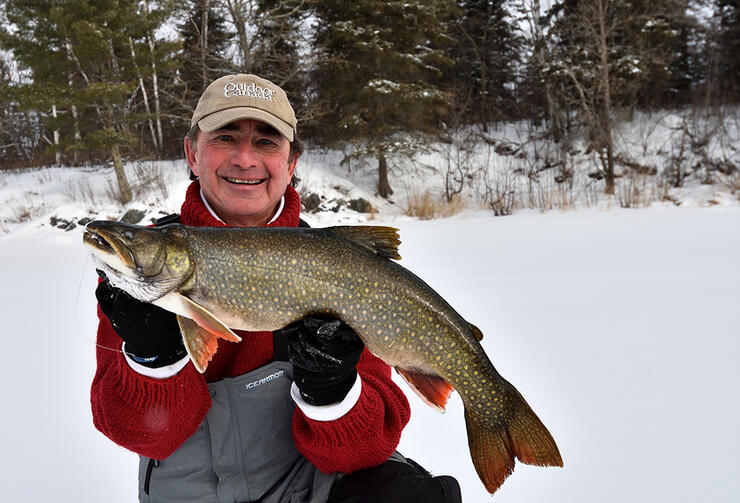
“I also like jigging 1/4- and 2/5-ounce Little Cleo and size 30 and 40 Williams Wobbler spoons. I rip them aggressively to attract the roaming fish, but then I thump them to seal the deal on the picky eaters. I stay entirely metallic using gold, silver, copper, gold/silver, and blue/silver. The only painted spoon in my box is orange. I find small Jigging Rap-style baits also to be effective.”
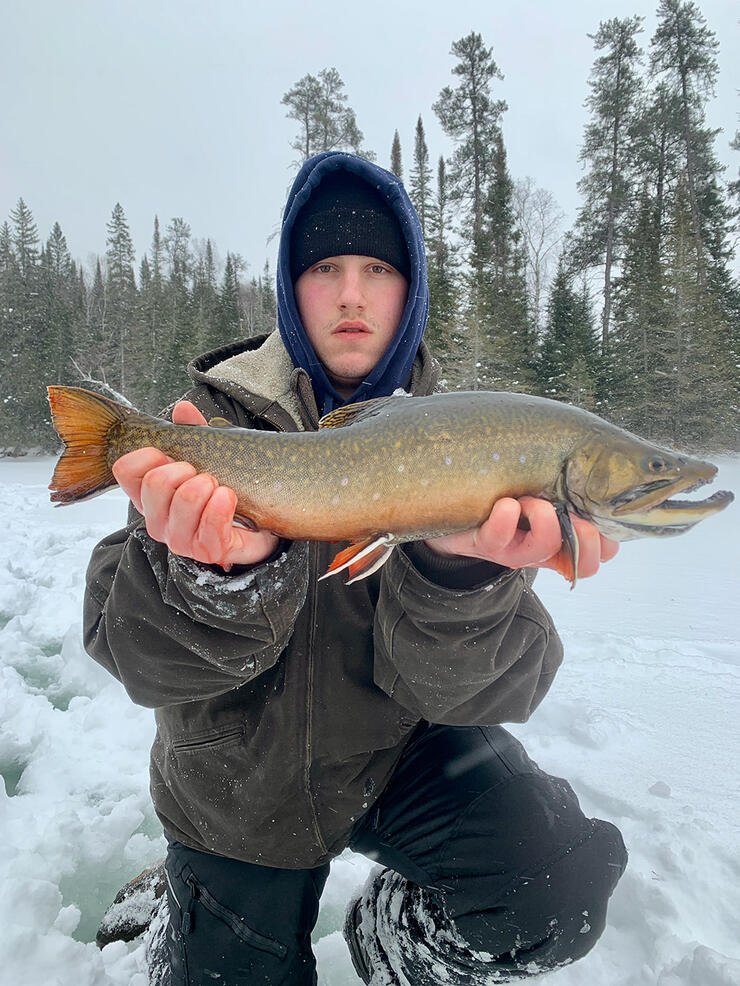
With ice fishing interest in splake soaring these days, Hartley has been forced to develop two finesse setups for the lakes where the fish see plenty of lures. “The first is a larger size 50 or 60 Williams Wobbler tied 12 to 18 inches above a single bead and lip hooked minnow,” he says. “The other is a drop shot just like I would use for bass or walleye, but with a heavier weight. I put a single bead above the hook and then tie a treble stinger off the eye. This keeps my minnow — I’ll use them up to six inches — horizontal. The setup stays in the strike zone, is super easy to adjust, and is more sensitive on a flag or bell system with the weight being at the bottom.”

With the temperatures dipping and the lakes freezing, it is time to set our sights on Ontario’s trophy-splake prize.
Recommended Articles
Don’t Be Afraid Of Muskies

Cast Into the Heart of a Walleye Paradise

Top Flies for Northern Pike

Eating Northern Pike

Wild Brook Trout
Fishing and Foraging
Top 5 Musky Destinations in Ontario

5 Places to Shore Fish
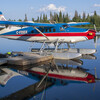
A Guide to Fly-in Ontario Lodges
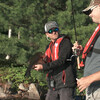
Fish'n Canada in The Rough
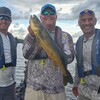
Tomiko Lake Lodge
Catching Ontario Walleye
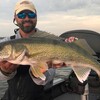
Lac Seul
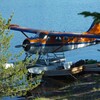
What to Pack for a Fly-in Adventure
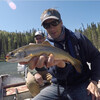
Troutfly Outpost is a Multi-Species Factory
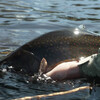
The Legendary Brook Trout of the Albany

Lakers of Lower Manitou: Fishing Just North of the U.S. Border
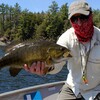
Fly Fishing for Bass

20 Years With Fish TV!
